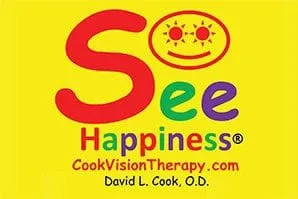While keratoconus can happen at any stage of life, young people between the ages of 10 and 25 are most likely to develop this disorder. For individuals with keratoconus, their cornea, the clear layer in the front of your eye, gradually thins and begins to bulge outward. Keratoconus typically causes nearsightedness
Read moreVisual Rehabilitation

Accurate vision is an important part of performing well at work, school, and in other everyday activities. In certain cases, however, medical conditions or injury may lead to visual impairment. For individuals with functional limitations resulting from visual impairment, visual rehabilitation can improve or restore everyday abilities. The most effective model for visual rehabilitation is one in which a patient receives input from his or her optometrist, medical doctor, psychologist, neurologist, and other allied health professionals to create an individualized visual rehabilitation plan.
Visual Rehabilitation Procedures
Visual rehabilitation involves constructing an individualized treatment plan to address each person’s unique issues. In some cases, this may involve occupational therapy to make a person’s environment easier to navigate. For many patients, however, vision therapy offered by an optometrist is an excellent way to improve or fully restore visual functioning.
Analogous to physical therapy for the vision system, vision therapy involves special exercises designed to retrain eye-brain circuits to perform more normally. Patients may be asked to view objects through special prism lenses, focus on an object as it moves, coordinate eye-body movements, or perform computerized tasks. Over time, these exercises improve visual deficits and reduce functional impairment.
-
Keratoconus
-
Viruses
Herpes Zoster (Shingles) If you ever had chickenpox, you’re at higher risk of developing shingles later in life. Shingles can affect many parts of the body. If it travels to your eyes, your cornea can become inflamed and even scarred. Corneal damage might not be apparent until months after the shingles
Read more -
Corneal Dystrophies
This group of corneal disorders includes more than 20 variations. Each affects different parts of the cornea, causing it to get cloudy and compromising vision. Most of these dystrophies are inherited, affect both eyes equally and spread between layers of the cornea as they gradually progress.
Read more -
Pterygium
Pterygium is characterized by a pink tissue growth on the sclera (the white part of the eye), which seems to be the result of chronic exposure to ultraviolet light. In fact, because many surfers suffer from pterygium, the condition is often called surfer’s eye. Pterygium is not cancerous and may continue
Read more -
Stevens-Johnson Syndrome
This skin disorder, also called erythema multiforme major, sometimes causes painful lesions on the eyelids. Stevens-Johnson syndrome can cause painful corneal blisters and even holes, leading to vision loss.
Read more -
Iridocorneal Endothelial Syndrome
This syndrome most commonly affects women between 30 and 50 years old. Symptoms include changes to the iris, corneal swelling and the onset of glaucoma.
Read more -
How the Eyes Work
Every morning, we open our eyes and become immersed in a wealth of visual information. The eyes and related brain structures are a complex system that allows us to experience visual information from the surrounding world. It is easy to take clear vision for granted, but even subtle changes in the structure
Read more -
Protecting Your Eyes
Of our five senses, humans rely on vision most strongly. Our everyday experience of the world is colored by our ability to see, our memory draws heavily upon visual information, and many activities of daily living are challenging without sight. As a result, it is essential to protect your eyes from damage.
Read more
Visit our Office
1395 South Marietta Pkwy SE Building 400, #107
Marietta, GA 30067
